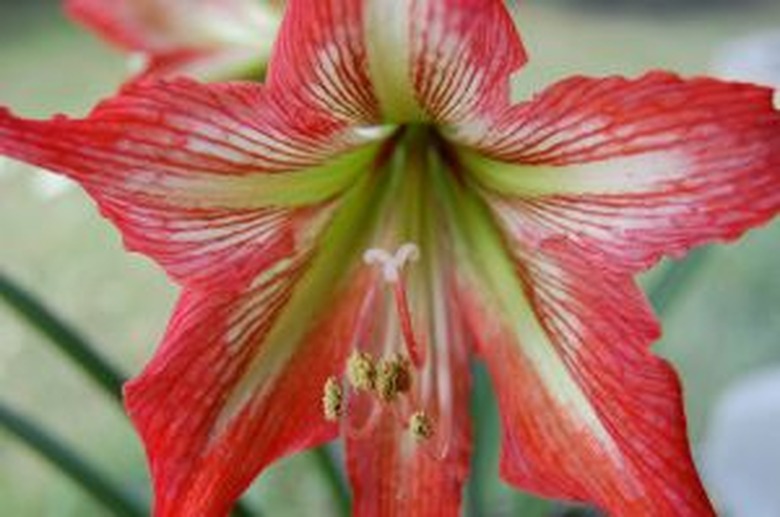How To Transplant Amaryllis
Things Needed
- Compost
- Shears
- Spade
Tip
Amaryllis don't require yearly transplanting. Transplant only when overcrowding affects the amount of blooms, from containers to the garden, or ever four years to divide the bulbs. Transplant container amaryllis into larger pots when the bulb is within ½ inch of the pot rim. Choose pots 2 inches in diameter larger than the bulb.
Warning
Amaryllis does not tolerate long periods of frost. Dig up and store the bulbs in a cool, dry place indoors if there will be extended frosts.
Amaryllis is often referred to as a Christmas flower since nurseries often force the bulbs in mid-winter. Outdoors, amaryllis blooms naturally in spring and early summer. In mild climates with minimal daytime freezing during the winter, amaryllis may be planted outdoors as a bedding plant. The red or white blooms grow from the top of 2-foot flower spikes and the lush green foliage adds interest to the garden long after the blooms fade. Transplant potted Christmas amaryllis in fall so they can go through a natural dormancy period before spring blooming.
Step 1
Choose a well-drained planting bed with full sun. Build up the bed to improve drainage and soil quality by working compost into the soil to raise it 2 to 4 inches.
- Amaryllis is often referred to as a Christmas flower since nurseries often force the bulbs in mid-winter.
- In mild climates with minimal daytime freezing during the winter, amaryllis may be planted outdoors as a bedding plant.
Step 2
Cut the remaining leaves down to 3 inches in length using sharp shears. Remove any yellowed, dead leaves and the spent flower stalk completely.
Step 3
Dump the soil and bulb out of the pot for container-grown amaryllis. Dig around bulbs in the garden to loosen the soil then lever them out with your spade, taking care not to damage them.
Step 4
Brush away the excess soil stuck to the bulbs and examine them for any rot or soft spots. Dispose of the damaged bulbs. Twist off any side bulbs growing from the main one and replant these as well.
- Cut the remaining leaves down to 3 inches in length using sharp shears.
- Dump the soil and bulb out of the pot for container-grown amaryllis.
Step 5
Sow each bulb 1 foot apart in clusters or rows. Plant the bulb so the top is just covered in soil and is barely visible.
Step 6
Water thoroughly after transplanting. Keep the soil moist to encourage healthy root growth. Stop watering once the bulb goes into complete dormancy and all the leaves have died back.
